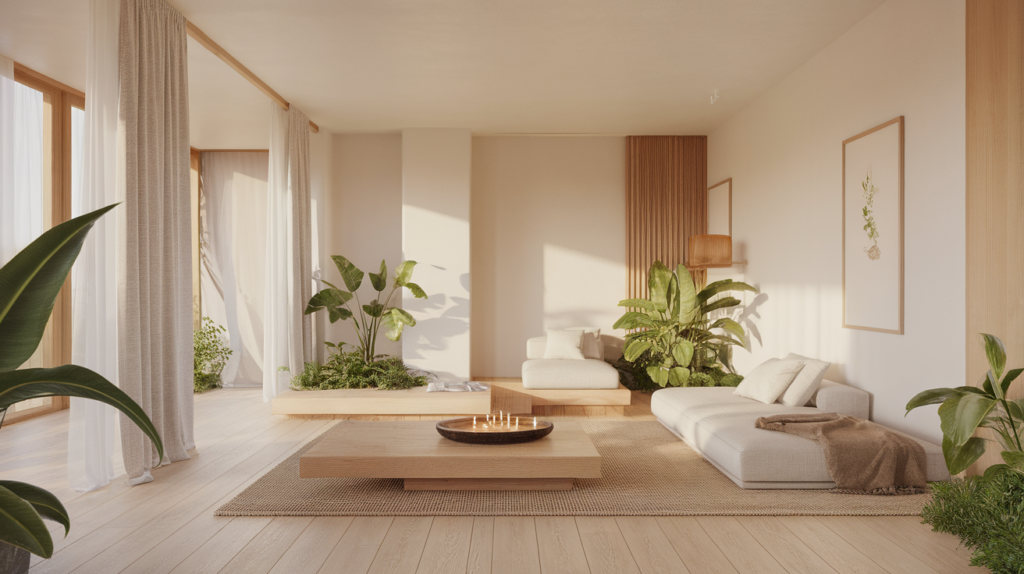Your home should feel like a serene, peaceful space. But does it feel that way right now?
Many houses today seem full of clutter and stress. There’s often too much stuff and not enough peace.
I’ve helped many people change their homes into relaxing, peaceful spaces.
The good news? It doesn’t have to cost a lot or take a considerable amount of effort. Even small steps can bring significant results.
This guide offers some simple ideas for creating a peaceful home.
You’ll learn how to create a calm and clear space. We’ll examine aspects such as color, lighting, and furniture.
I’ve seen these tips help so many people. I know they can help you too. Let’s begin turning your home into the quiet space you need and deserve.
How Zen Design Improves Daily Life?
Zen design does more than change the look of a room. It also changes the way you feel every single day.
First, it helps lower stress. When your space is clean and simple, your body and brain can relax.
A calm room helps slow down your thoughts and lets your mind rest. Experts have found that messy spaces can raise stress hormones.
Second, it helps you sleep better. Light colors and simple decor make it easier to feel calm at night. Falling asleep becomes easier when your room feels quiet and restful.
Third, it helps you focus. When your space is neat, it’s easier to think clearly and stay on task.
Lastly, these spaces are easier to care for. With fewer items, you’ll clean less and enjoy your home more.
Zen Interior Designs
Creating a zen home is simpler than you think. These ideas will guide you step by step. Each one builds on the others to create total harmony.
1. Soft, Neutral Color Palette
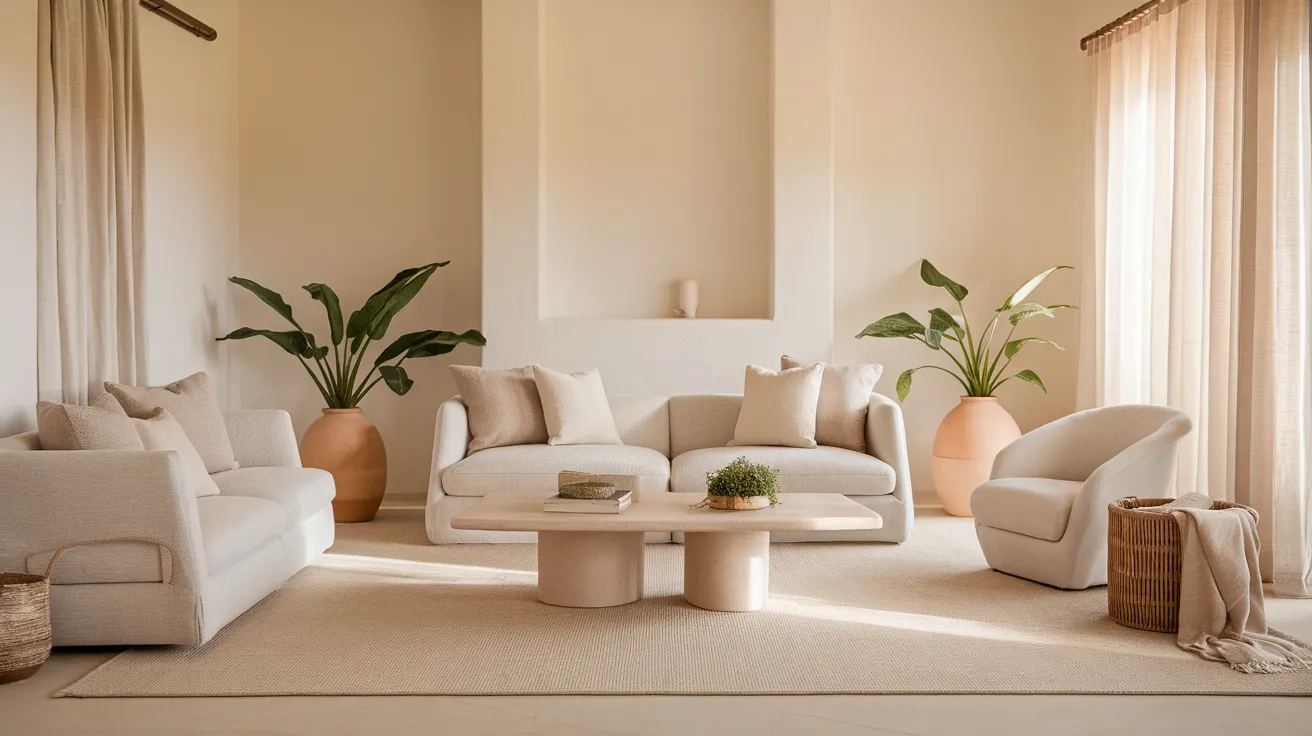
Color sets the tone in any room, and calm shades help your space feel quiet and open. Soft whites, warm grays, and light beiges reflect light gently, making rooms feel bigger.
Light blues and greens can add a bit of nature, but it’s best to use them only in small amounts.
Avoid intense, bright colors like red or orange, as they can appear too energetic.
Choose a neutral color for most of the walls. This creates a smooth, peaceful appearance throughout your entire home.
You can still incorporate small touches, such as plants or cushions, to add variety later.
2. Natural Materials in Zen Interiors
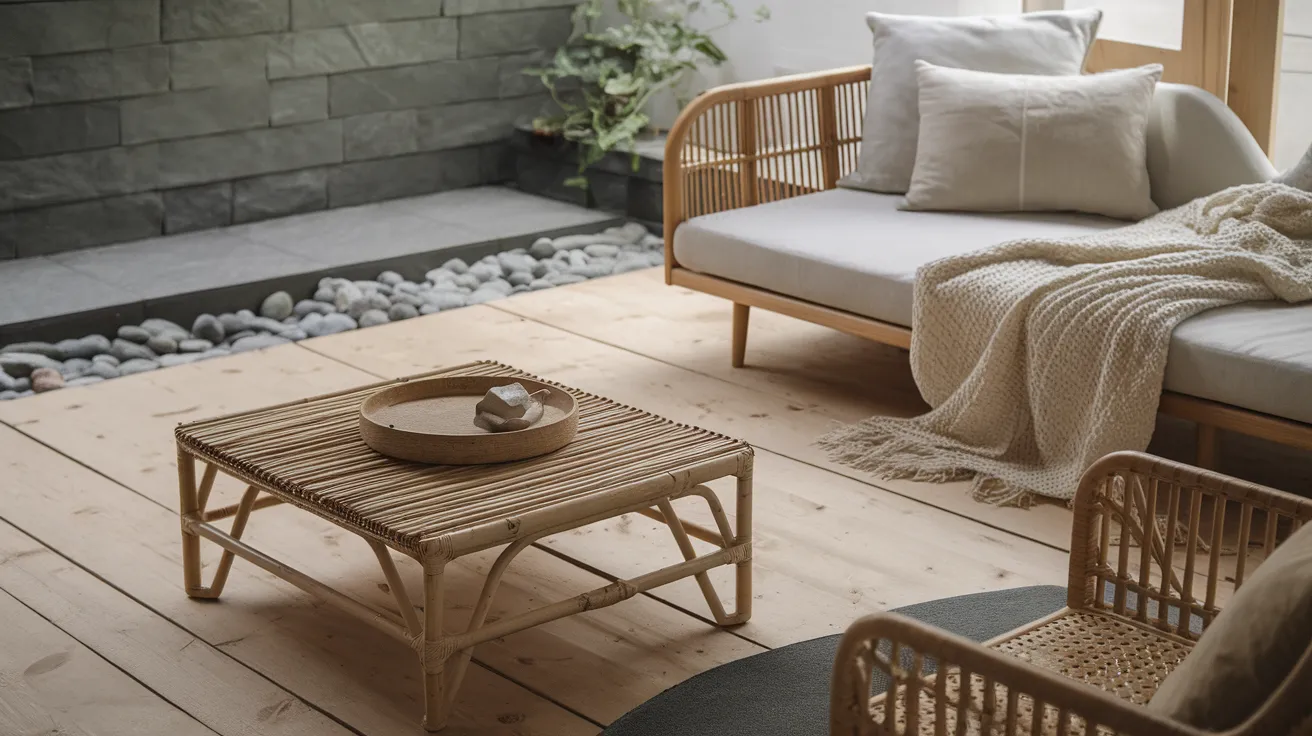
Using real materials makes your space feel warm and calm. Wood, especially bamboo or light types like birch and pine, works well and feels fresh.
Stone such as slate or river rock can help ground your space, making it feel solid and balanced.
Cotton and linen are perfect for pillows, curtains, or blankets because they’re soft and easy to live with. Try adding rattan or wicker for more texture without making things feel heavy.
These materials all work together to help you feel more connected to the space and to make it easier to relax at the end of the day.
3. Embracing Minimalism
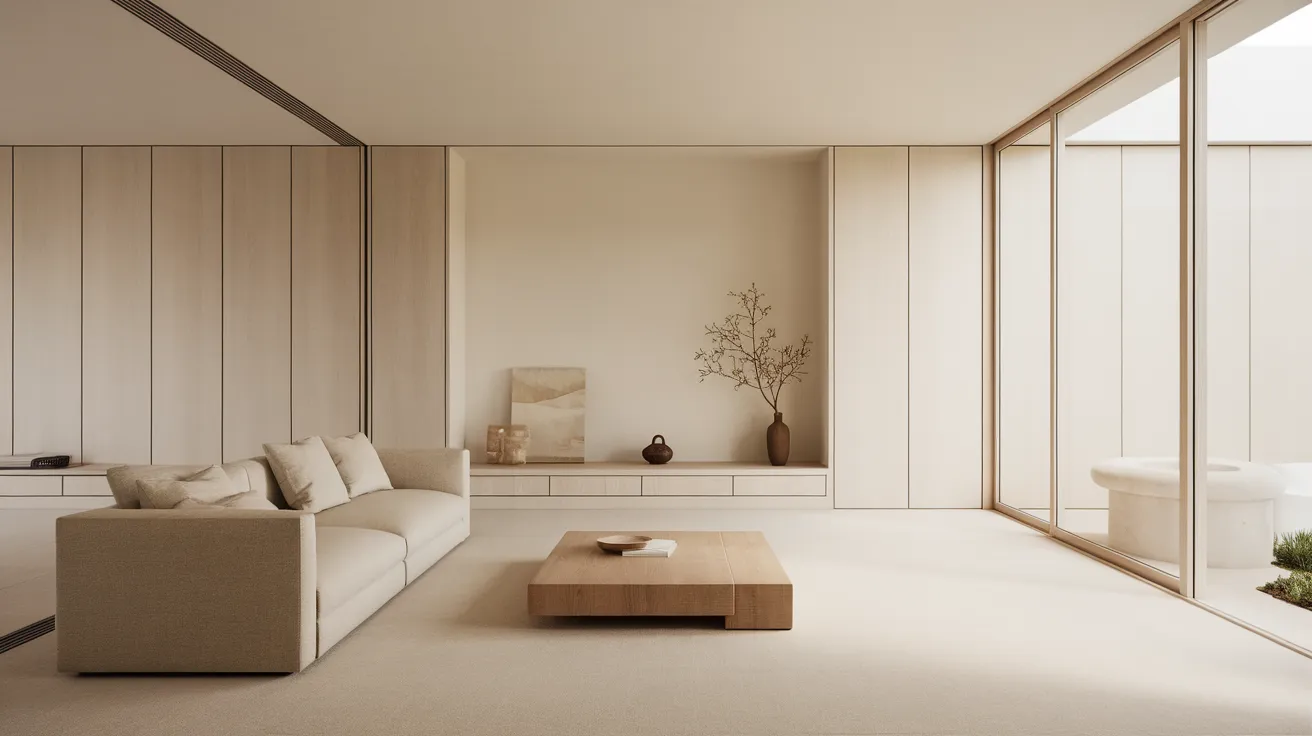
Having fewer things around helps your mind rest. Start by keeping only what you need or truly like.
Give away or store anything that doesn’t feel useful or important. Once you clear out extra stuff, focus on keeping surfaces tidy.
Clean tables and open shelves give your eyes space to rest. Store valuable but messy items in hidden spots, such as cabinets or under-bed boxes. Try not to fill every shelf or corner.
Space is just as important as the things you keep. It lets your room feel quiet and easy to be in, which is the goal of this style.
4. Natural Light in Interior

Allowing more sunlight in can change the ambiance of your home. Replace heavy curtains with light ones made of cotton or linen.
These still give you privacy but allow soft light to enter.
Clean your windows often so more light can come through; place mirrors across from windows to bounce sunlight around.
If you’re renovating your home, consider adding skylights. These bring in light from above and can brighten any space.
Even trimming trees outside can help more light get in. The more natural light you have, the brighter and better your space will feel during the day.
5. Meditation Nook
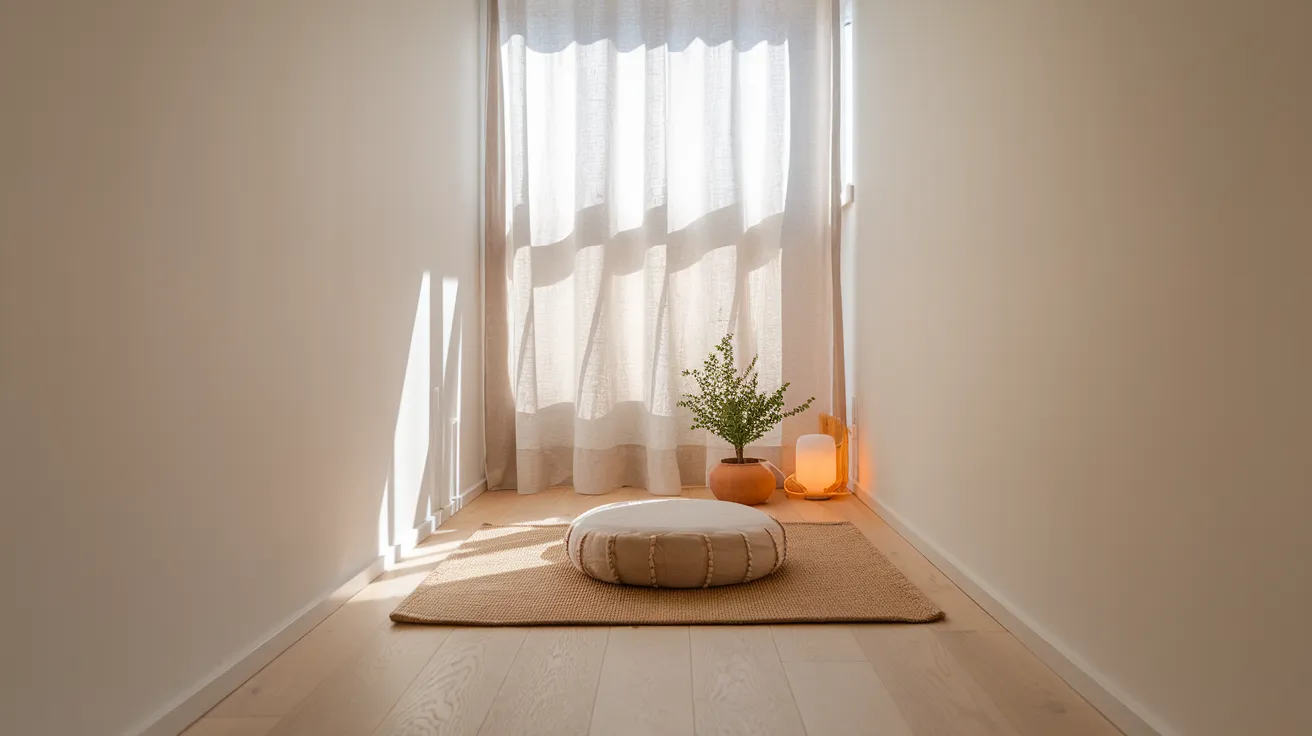
Everyone needs a quiet place just for themselves. Select a quiet corner away from the noise and people passing by.
A window is best, but any calm space will do. Keep it simple; a floor cushion or a small chair is enough. A soft light or a plant can help the area feel more inviting.
Try to keep the space for quiet time only. Don’t use it for work or storage. Over time, just sitting there will help your mind relax.
With regular use, this little corner can become a place where you feel calm and ready to take a breath.
6. Indoor Plants
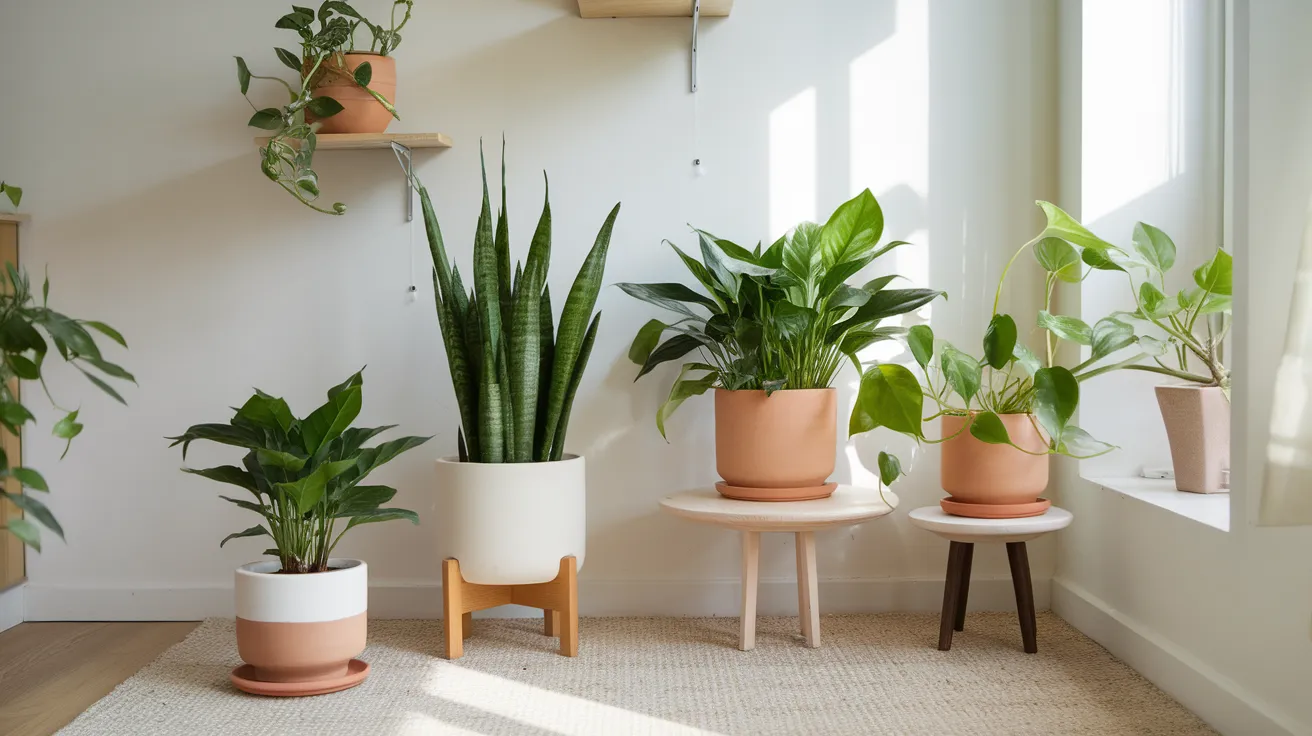
Adding plants helps your home feel alive and fresh. Start with easy ones like snake plants or pothos.
They’re simple to care for and make the air cleaner. Use plain pots in colors like white or clay so the plants stand out.
Try placing them at different heights using shelves or stands.
This makes your space look more interesting without adding too much. Put sunny plants near windows and keep shade-loving ones in darker areas.
Having even just a few healthy plants can make your home feel more peaceful and help you enjoy spending time in your space.
7. Low Profile Furniture
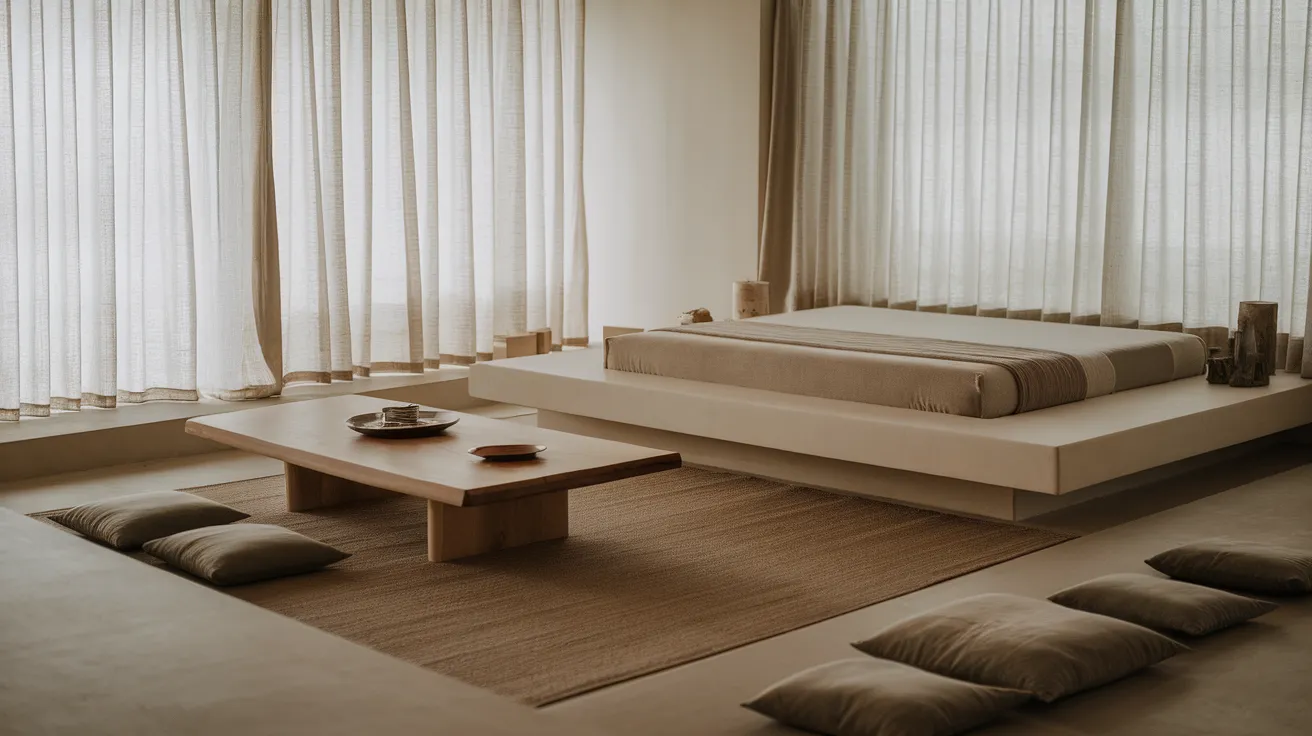
Furniture that sits lower to the ground helps your room feel wide and peaceful.
Sofas, beds, and chairs that are positioned closer to the floor make the ceiling appear taller and give the room a quiet, open feel.
Platform beds are an excellent choice for bedrooms.
They often have space underneath to store things, keeping your room neat. Choose tables and chairs with simple shapes and smooth lines.
Avoid furniture that appears heavy or occupies excessive space.
When your furniture feels light and simple, the whole room becomes easier to navigate and more relaxing to live in.
8. Water Elements
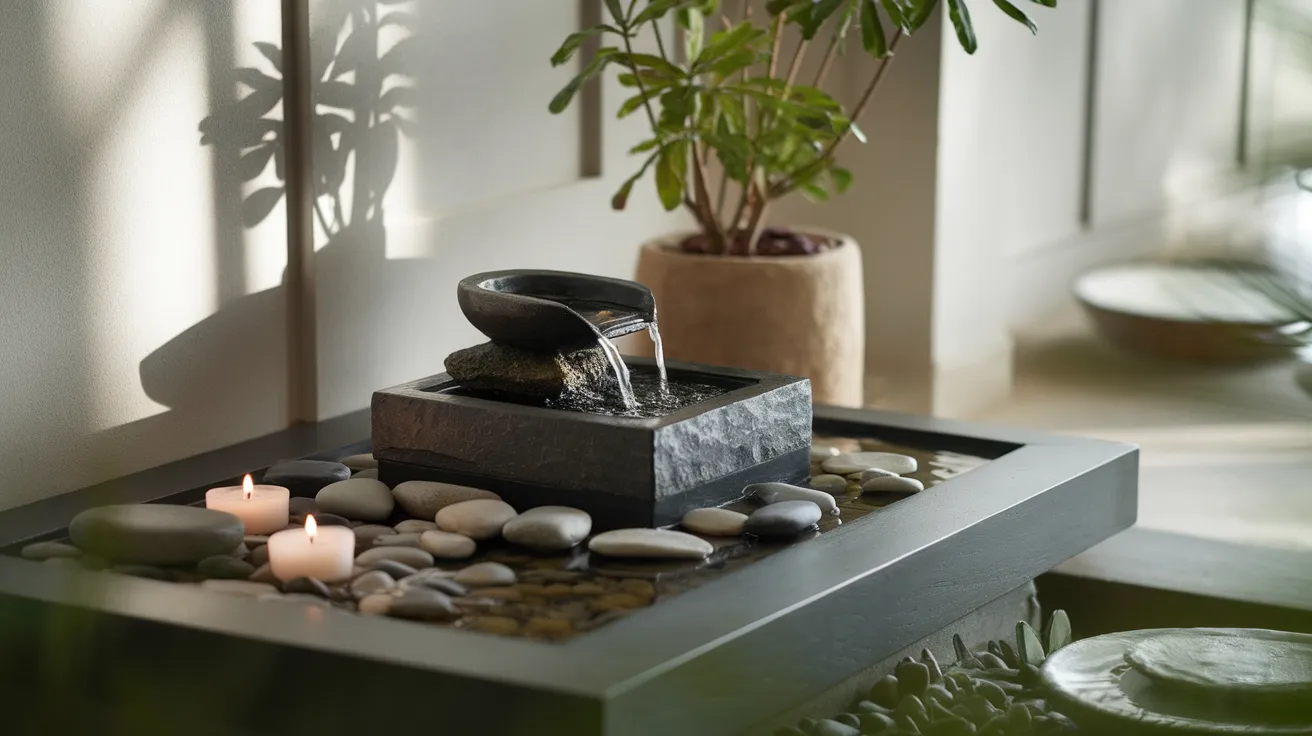
The sound of water helps calm your body and mind. Small fountains that sit on tables are a great choice because they don’t take up much space.
If you like fish, a small tank with natural plants can also work, but be sure to take care of it.
Even a bowl with floating candles adds a peaceful feel. Keep the sound low and gentle.
Loud water noises can be distracting. If you want something bigger, a wall or floor fountain can be a great addition, but only if it fits the space.
The goal is to add peace, not more noise.
9. Open Layouts
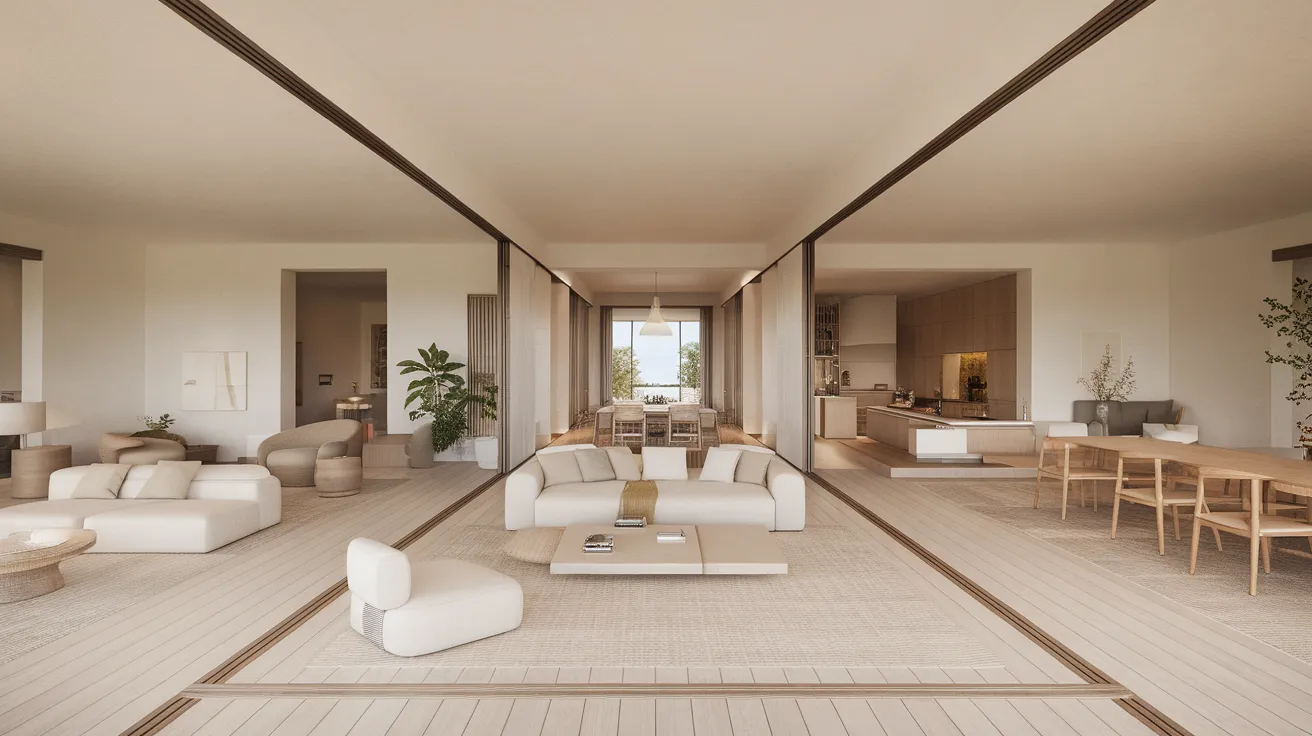
Rooms feel bigger and calmer when they’re open and easy to walk through. If possible, remove walls that break up the space.
This makes light and air flow more freely. Arrange furniture so that people can move around it easily.
Pull chairs and sofas away from the walls to create cozy spots for talking.
Use rugs to designate different areas, such as reading corners or dining spots. Keep paths clear so you can see from one room to the next.
If you don’t need a door, remove it. A space with fewer barriers feels more welcoming and easier to enjoy.
10. Natural Textures

Texture adds interest without making things feel busy. Use smooth and rough surfaces together for balance.
A soft rug next to a wooden floor or a linen curtain near a stone wall can create a warm and inviting atmosphere. Use baskets to store small items and add texture.
Choose materials like jute or seagrass for rugs, which are strong and age well. Keep the wood’s natural look by using clear finishes instead of paint.
Let stone show its natural color and shape. These kinds of materials help your home feel simple, solid, and easy to relax in every day.
11. Purposeful and Simple Decor
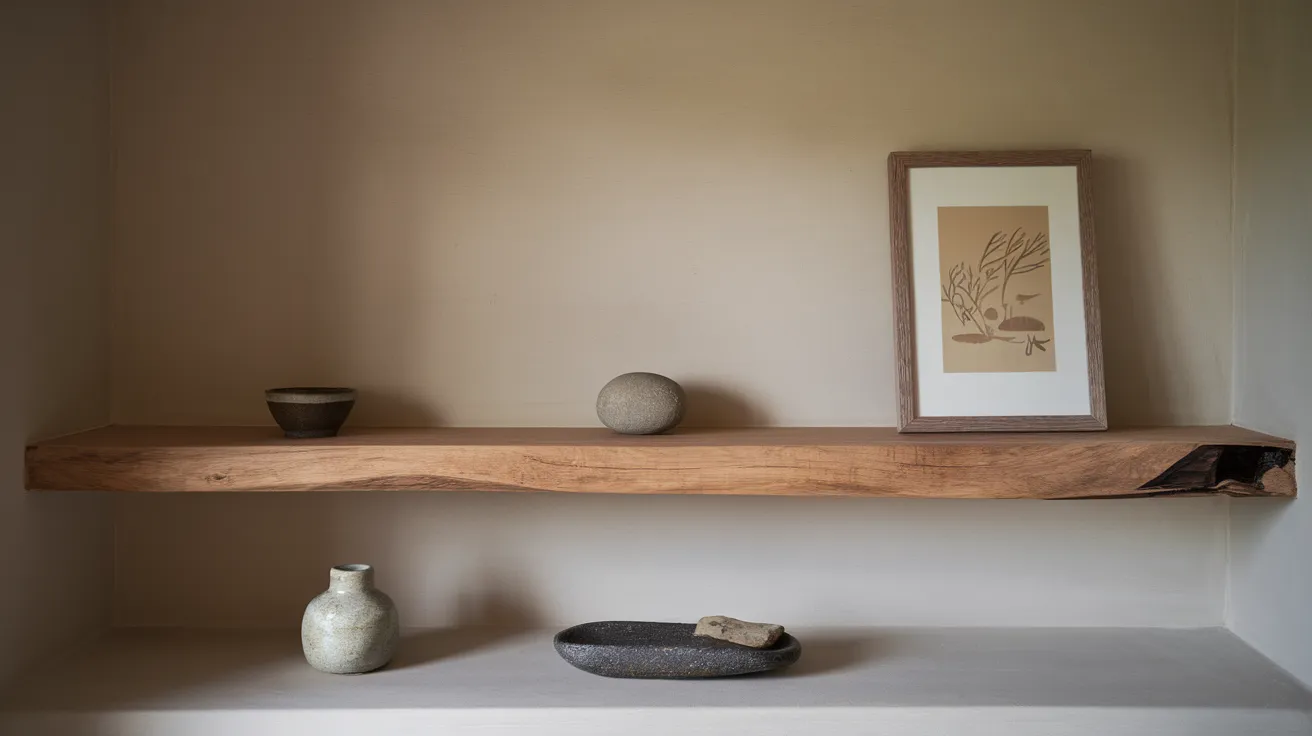
Decorations should feel right, not just fill space. Pick items that have meaning to you, like a gift or something from a trip.
Use fewer things but place them in ways that stand out.
Try grouping items in threes; it feels more balanced than even numbers. Keep colors and patterns simple.
Art that features nature or soft, rounded shapes works well. Avoid anything too bright or detailed.
Look around often and ask yourself if everything still fits your space and mood. It’s okay to put some things away or give them up. Your home should feel open and calm.
12. Soft Lighting

The proper lighting makes a room feel safe and cozy. Instead of using one big light on the ceiling, try a few smaller ones.
Table lamps and standing lights let you control how bright your room feels. Use light bulbs that emit a soft, warm glow instead of sharp, white light.
Add dimmer switches to adjust the brightness according to the time of day. Candles work well too, especially if they’re plain and unscented.
You can even try salt lamps for a gentle glow. These small changes make your home feel calm the moment you walk in.
13. Fragrance or Atmosphere

Smells affect how we feel, so choose natural ones for a calm home. Essential oils like lavender help you relax, while eucalyptus leaves you feeling clean and fresh.
Use incense or fresh flowers for a more earthy scent. Avoid store-bought sprays with chemicals; they can be too strong and may cause discomfort.
Open your windows often to let in fresh air. It’s one of the best ways to keep your space feeling light. If you want something that lasts all day, use a diffuser with simple oils.
Just remember, less is better. A light, fresh smell is all you need.
Tips for Incorporating Zen into Your Home Interior
The following are the things you need to keep in mind when incorporating Zen into your home:
- Use soft, neutral color palettes
- Choose natural materials like wood and stone
- Keep furniture low and simple
- Maximize natural light wherever possible
- Add indoor plants for freshness and calm
- Create a small, quiet corner for relaxation
- Use meaningful and straightforward decor pieces
- Keep surfaces clear and clutter-free
- Add gentle water features for soothing sound
- Use soft lighting with warm tones
- Choose natural textures for depth without noise
- Open up layouts for better flow and air
- Use closed storage to hide daily clutter
- Add gentle, natural scents like lavender or sandalwood
- Practice “less is more” in every room
Conclusion
Creating a peaceful home doesn’t need to happen all at once. Start small and build changes slowly over time.
Pick one or two ideas that feel exciting or simple to try. Focus on those first and give yourself time to adjust.
You could begin by decluttering just one room. Or try adding plants to your living area for a quick boost of calm.
Each small change brings you closer to the kind of space you want to live in.
You’ll likely sleep better in a quiet bedroom. You may feel more relaxed cooking in a clean kitchen. Your whole family can enjoy the comfort of a calmer space.
This process is personal, so trust your instincts and what feels right in your home.
Share your favorite ideas in the comments below. Your story might inspire someone else to begin, too.

